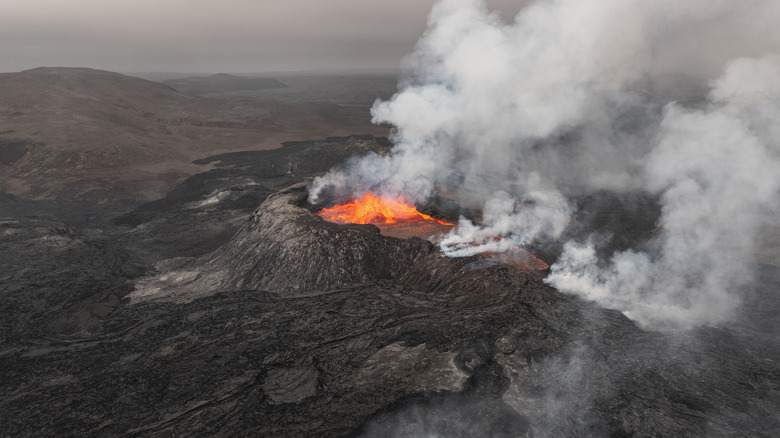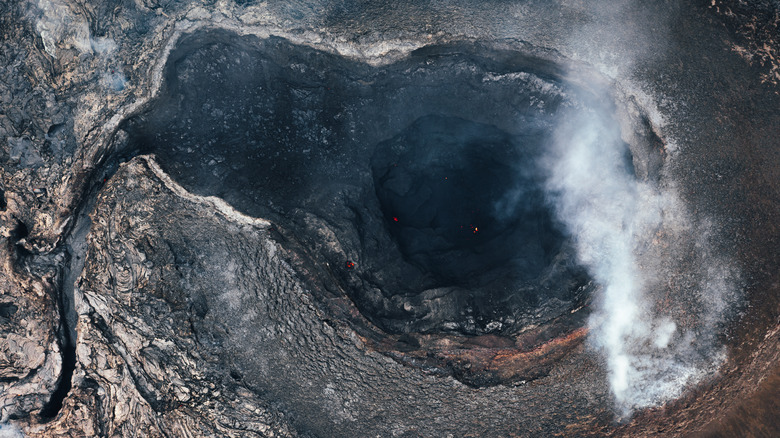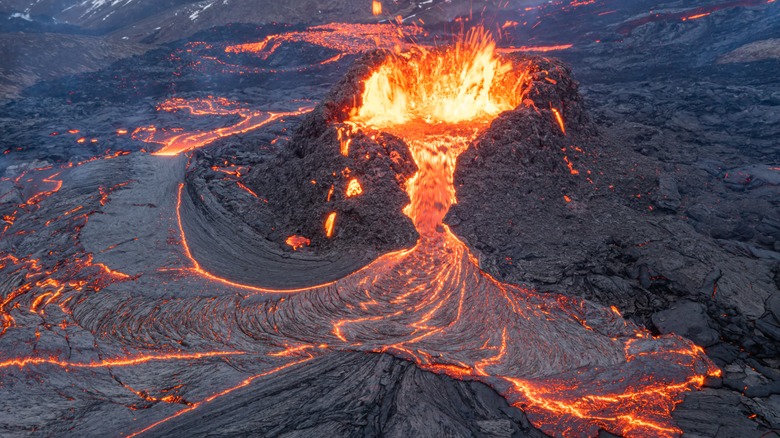How Often Does Iceland's Mount Fagradalsfjall Erupt?
Iceland is a remote island hidden away in the North Atlantic Sea around 500 miles north of Scotland. The ancient nation, which first formed on the island some 1,100 years ago, has a minuscule population of around 395,000, around the same as a medium-sized city. Weather conditions in Iceland are unpredictable and can change very quickly with lots of wind and substantial rainfall, but thanks to the Gulf Stream, temperatures generally range from the 30s to the 50s Fahrenheit on average.
Iceland is a huge draw for tourists, a land with a culture as distinct as its landscape. Though rugged, Iceland is a country of outstanding natural beauty, with travelers coming to experience the northern lights, which can be seen throughout the autumn and winter thanks to the area's low levels of light pollution.
Central to Iceland's identity is the volcanic nature of the island, with around 130 separate volcanoes found within a 200-mile radius. The volcanic underground activity also populates Iceland with some of its most popular attractions, such as geysers, which shoot steaming hot sulfur-infused water dozens of feet into the air, and naturally occurring hot springs, such as the famous Blue Lagoon a short drive from Reykjavik.
But Icelandic volcanoes aren't entirely benign: in 2010, the volcano Eyjafjallajökull erupted, filling the air over Europe and grounding countless flights. More recently, reports have emerged that the volcano Fagradalsfjall, which has lain dormant for centuries, has become violently active again with regular eruptions over the last few years. While it has become a tourist destination in itself, the volcano is now threatening the nearby population and causing panic on the island.
A sleeping giant
Fagradalsfjall is located on the Reykjanes peninsula in the southwest corner of the island 35 km (22 miles) from Reykjavik. Despite its proximity to the capital, it is located in an area of Iceland that is relatively uninhabited, though it is a common destination for visitors looking to explore the country's unique landscape.
At 385 meters (1263 feet) high, Fagradalsfjall is the most imposing mountain in the area, which was known to early Icelanders for its outstanding beauty. The most prominent volcano in the area, it has reportedly lain dormant for more than 6,000 years, while the area last experienced volcanic activity around eight centuries ago.
However, that all changed in March 2021, when the region experienced a battery of earthquakes and tremors that came in waves over a period of three weeks, alerting experts to the fact that Fagradalsfjall was likely to erupt. And on March 21 that year, it did, releasing lava onto the surface of the peninsula for the first time in 800 years in an eruption that lasted six months and transformed the landscape with newly formed black craters.
A recent flurry of volcanic activity
After the first modern Fagradalsfjall eruption in March 2021, another struck within the space of just 10 months and then again in July 2023, which was reportedly 10 times more powerful than the first. While most of the activity so far has been in the category the locals call "tourist eruptions," meaning lava flows that look impressive but are actually accessible and not too dangerous, in the winter of 2023 experts claim that Fagradalsfjall looks likely to become a threat. On November 13, 2023, Icelandic officials declared a state of emergency over the newly active volcano. Though the peninsula on which Fagradalsfjall is located has only a minuscule population, the town of Grundavik located 31 miles southwest of Reykjavik has had its 3,400 residents evacuated as geologists await the next eruption. The recent uptick in volcanic eruptions in the region has been dubbed a new era of volcanic activity for Iceland, unlike anything in living memory.
But while the volcanoes are more of a threat to the Icelandic residents whose homes may be destroyed rather than the visitors to flock to the island to get a glimpse of a real-life volcano in action, they remain dangerous to all. Not only is the molten lava itself capable of causing severe burns, but the smoke that accompanies it is often toxic, meaning that both visitors and locals must pay attention to wind direction.


